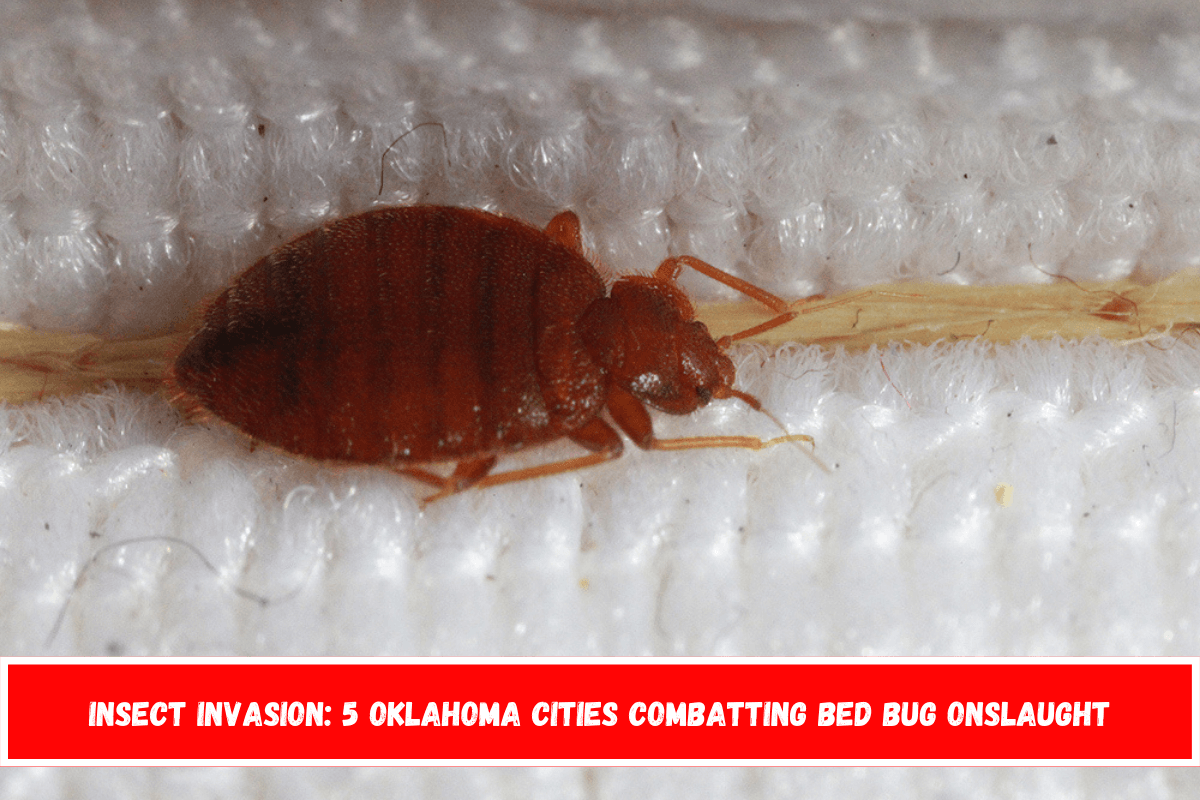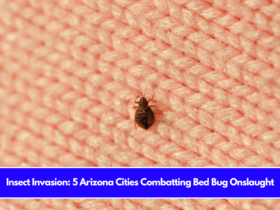Imagine waking up in the middle of the night, itching nonstop. You turn on the light and discover tiny, reddish-brown insects crawling across your mattress. It’s a terrible situation, but for many Oklahoma citizens, it’s becoming a reality. Bed bugs are resurging across the state, with five communities in the forefront of this itchy war.
Bed bugs are parasitic insects that feed on blood from humans and animals. While their bites are rarely harmful, they can induce a variety of unpleasant symptoms including as itching, swelling, and insomnia. Unfortunately, bed bugs are extremely resilient pests, making them difficult to eliminate once they have established themselves in a home or apartment.
The Bed Bug Blitz: 5 Oklahoma Cities on High Alert
Several Oklahoma cities are experiencing a surge in bed bug infestations. Here’s a closer look at the challenges faced by five major population centers:
- A. Oklahoma City: The state capital has not been spared from the bed bug infestation. According to a recent report from the Oklahoma City-County Health Department, bed bug complaints have climbed by 20% over the last year. This growth is most likely due to a combination of causes, including greater travel, the growing popularity of secondhand furniture, and the predominance of multi-unit living in the city.
In response to the rising problem, Oklahoma City has begun a public education effort to teach citizens about bed bugs and how to avoid infestations. In addition, the city has teamed with local pest control companies to provide low-income residents with affordable treatment alternatives.
- B. Tulsa: Oklahoma’s second-largest city has comparable challenges. Tulsa has witnessed a 15% increase in bed bug complaints in the last year. The high turnover rate in rental homes, particularly student accommodation, is thought to be a contributor. Local pest control companies indicate an ongoing demand for bed bug treatment services, highlighting the city’s extensive problem.
Tulsa’s community organizations are taking action to address the situation. The Tulsa Chapter of the National Apartment Association is holding training programs for landlords and property managers on bed bug prevention and control.
- C. Lawton: Lawton, home to the Fort Sill Military Base, presents particular problems in the fight against bed bugs. The frequent mobility of military members and their families can help spread infestations. Lawton is investigating novel approaches of combating bed bugs. The city is running a pilot program that uses specially trained bed bug detection canines to discover infestations early on, allowing for faster intervention.
- D. Enid: Enid, a booming community in northwestern Oklahoma, is likewise dealing with bed insect infestations. The city has experienced a 10% spike in bed bug complaints in the last year. Enid focuses its attention on education. The Enid Public Library has collaborated with the Oklahoma State Department of Health to provide instructional seminars to citizens on how to recognize bed bugs, prevent infestations, and select a trustworthy pest management business.
- E. Stillwater: Stillwater, home of Oklahoma State University, poses a unique challenge. The high student population and rapid turnover in student housing make an ideal environment for bed bug infestations. The university has taken a proactive approach, collaborating with local pest control businesses to create a comprehensive bed bug management plan for the dorms and off-campus student housing.
Battling the Bite: Strategies for Eradicating Bed Bugs
Eradicating bed bugs requires a multi-pronged approach due to their stealthy nature and resilience. Here are some key strategies:
- Inspection: Early detection is critical. A professional inspection by a licensed pest control firm is the most effective way to discover an infestation and determine its scope.
- Treatment: There is no one-size-fits-all solution for bed bug treatment. Common methods include:
- Heat treatments: These treatments use high heat to eliminate bed bugs and their eggs.
- Chemical insecticides: Professional pest control firms employ specialized insecticides to eliminate bed bugs and their hiding places.
- Encasements: Encasing mattresses and box springs in protective covers helps keep bed bugs from feeding or spreading.
- Prevention: When it comes to bed bugs, prevention is more important than cure. Here are some tips for preventing infestations:
- Travelers: Be cautious when staying in a hotel. Inspect your room for evidence of bed bugs, such as little bloodstains on the bedding. Place bags on luggage racks away from the walls and bed.
- Used furniture: Do not bring used furniture into your home unless you thoroughly inspect it first. Look for symptoms of bed bugs, such as shed skins and feces.
- Creating a bed bug-resistant environment: Vacuum your carpets and furnishings on a regular basis. Wash the bedding in hot water (at least 140°F) and dry on high heat. Seal cracks and crevices around beds and baseboards where bed bugs may hide.
- Seeking professional help: If you suspect a bed insect infestation, do not attempt to treat it yourself. Contact a trustworthy pest control firm that specializes in bed bug removal.
Community Collaboration: Working Together to Win the War
Combating bed bugs effectively requires a community-wide effort. Here are some ways communities can work together:
- Public awareness campaigns: Educating residents about bed bugs, including identification, prevention methods, and the importance of seeking professional treatment, is crucial.
- Collaboration between landlords and tenants: Landlords and tenants need to work together to address bed bug infestations. Landlords should have clear policies for dealing with bed bugs, and tenants should be proactive in reporting any signs of an infestation.
- Financial assistance programs: For low-income residents, the cost of bed bug treatment can be a significant barrier. Community organizations and local governments can work together to develop financial assistance programs to help these residents afford professional bed bug eradication.
Several localities in the United States have effectively reduced bed bug infestations through collaborative efforts. For example, the city of Cincinnati implemented a multifaceted strategy that included public education campaigns, agreements with landlords and tenants, and the formation of a bed bug task force. These initiatives resulted in a considerable reduction in bed insect complaints during a three-year period.
Conclusion
The bed bug comeback in Oklahoma is cause for concern, but it is not an insurmountable issue. Oklahoma’s cities can win the battle against these itching invaders by raising awareness, implementing effective preventive and treatment programs, and collaborating as a community.















Leave a Reply